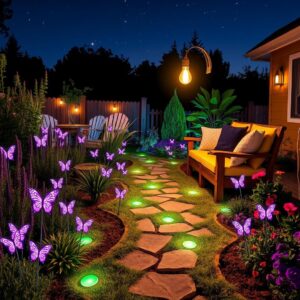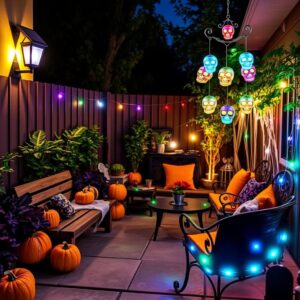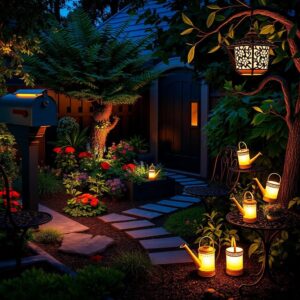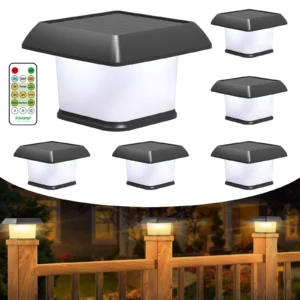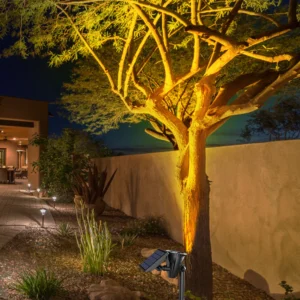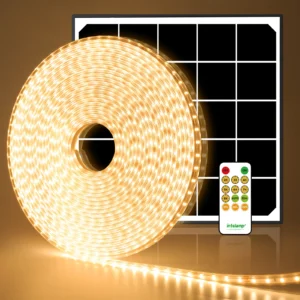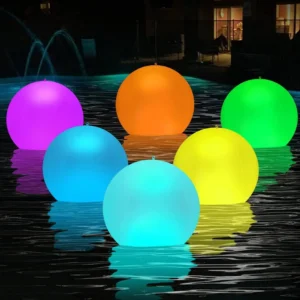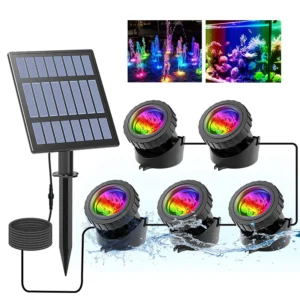1. Brief Introduction
When it comes to outdoor stair lighting, safety is paramount. This article explores essential principles for illuminating your stairs effectively while enhancing aesthetics with solar-powered step lights.
2. Principle One: Residual Lights
Utilizing residual lights from surrounding fixtures is a key strategy for creating a safe and inviting outdoor environment. This technique involves strategically placing lights nearby—such as wall sconces, garden spotlights, or pathway lights—to cast a gentle, diffused glow that illuminates your stairs without overwhelming brightness.
By leveraging ambient light, you reduce the stark contrasts that can create shadows and obscure visibility on steps, making it easier to navigate safely, especially at night. This approach not only enhances safety but also contributes to the overall aesthetic of your outdoor space, providing a warm, welcoming atmosphere.
To maximize the effectiveness of residual lighting, consider the placement and design of your surrounding fixtures. Use fixtures with a broad beam spread to ensure that the light is evenly distributed across the stairs. Additionally, choose lights with adjustable brightness or color temperatures to create a harmonious balance with your landscape, ensuring that the lighting complements the natural beauty of your garden.
This subtle illumination technique allows homeowners to maintain a peaceful ambiance while ensuring that the pathway is clearly defined, making it an essential principle for effective outdoor stair lighting.
3. Principle Two: Avoid Large Contrast
To ensure a safe and navigable outdoor environment, it’s crucial to avoid large contrasts in lighting, particularly on stairways. High contrasts—where bright lights sharply transition to dark areas—can create deep shadows that obscure visibility, increasing the risk of accidents as individuals ascend or descend the stairs.
To achieve even lighting, it’s essential to illuminate both the risers and treads of the stairs. A well-lit riser not only helps define each step but also reduces the risk of missteps caused by unclear boundaries. For instance, placing downlights strategically in front of each step can effectively illuminate the risers, ensuring that they are visible and easy to identify.
Consider using fixtures that provide soft, diffused light rather than focused beams. This can be accomplished with wall-mounted fixtures or recessed lights that spread light across the staircase. Additionally, avoiding fixtures that create sharp, direct shadows helps maintain a consistent lighting level throughout the staircase.
Incorporating moonlighting techniques—where lights are positioned above the stairs to mimic natural light—can also enhance visibility while minimizing contrast. This method creates a gentle wash of light that highlights the stairs without causing harsh glares or deep shadows.
Overall, by ensuring even lighting throughout your stairway, you can significantly improve safety for users, making it easier for them to navigate their way without the concern of hidden hazards or missteps.
4. Principle Three: Moonlighting
Moonlighting is an effective technique for enhancing outdoor stair lighting by creating a soft, natural illumination that mimics the gentle glow of moonlight. This method involves strategically placing pendant lights or downlights above the stairs to cast a diffused light that subtly highlights both the risers and treads, improving visibility while maintaining a tranquil ambiance.
By positioning the lights slightly higher, you can achieve an even distribution of light that minimizes harsh shadows, which is especially beneficial in areas where visibility is critical. This upward placement allows the light to wash down over the steps, illuminating them without creating blinding glare, making it safer for users navigating the stairs at night.
When selecting pendant lights for moonlighting, consider fixtures with a warm color temperature to enhance the inviting atmosphere of your outdoor space. Fixtures with adjustable brightness or directional capabilities allow you to customize the lighting effect, ensuring that the risers are adequately illuminated without overwhelming the surrounding landscape.
Additionally, incorporating natural elements—such as trees or structures—into your moonlighting design can enhance the aesthetic appeal. For instance, hanging lights from tree branches not only creates a magical effect but also utilizes the natural environment to disperse light more effectively across the stairs.
Incorporating moonlighting as a principle for outdoor stair lighting not only enhances safety by clearly defining each step but also elevates the overall atmosphere of your garden or outdoor space, creating a serene and enchanting environment for evening gatherings or leisurely strolls.
5. Principle Four: Lighting Fixture Placement
Strategic lighting fixture placement is crucial for maximizing safety and visual appeal in outdoor stair lighting. The goal is to create a well-lit path that guides users smoothly from top to bottom. To achieve this, begin by positioning lights at the top of the staircase, ensuring that the first step is clearly illuminated. This initial light serves as a visual cue, helping users anticipate the stairs as they approach.
From the top, distribute fixtures evenly down the staircase. Depending on the layout and design of your stairs, this can be accomplished by using a combination of under-cap lights, riser-mounted lights, or wall sconces. For instance, under-cap lights mounted on the stair treads can provide direct illumination, while wall-mounted fixtures along the sides can enhance overall visibility without causing glare.
When planning the placement of your lights, consider the height and angle of the fixtures. Lights should be positioned to shine directly onto the steps, minimizing shadows and ensuring that both risers and treads are visible. If your staircase has multiple landings, strategically placing fixtures at these intervals can also create a visual break, helping users navigate the stairs with ease.
It’s also important to consider the spacing between fixtures. Ideally, lights should be placed at regular intervals to maintain a consistent level of illumination. This could mean installing lights every two to three steps, depending on the intensity of the fixtures and the overall brightness desired. The key is to avoid large gaps in lighting, which can create dark areas that pose safety risks.
Additionally, incorporating adjustable fixtures allows for customization based on the specific layout of your stairs and the surrounding landscape. By fine-tuning the angle and direction of the lights, you can enhance the lighting effect and ensure a safe, aesthetically pleasing experience.
Ultimately, effective lighting fixture placement not only enhances safety by clearly defining each step but also creates a welcoming atmosphere, encouraging outdoor use and enjoyment during the evening hours.
6. Principle Five: Surrounding Lights
Incorporating additional lighting fixtures around staircases plays a vital role in enhancing both visibility and aesthetics. By creating a well-lit environment that extends beyond the steps themselves, you can significantly improve safety while also elevating the overall ambiance of your outdoor space.
Start by considering the various types of fixtures that can complement your stair lighting. Uplights, path lights, and decorative lanterns can be strategically placed in adjacent areas—such as garden beds, along pathways, or near seating areas—to cast light towards the stairs. This not only brightens the immediate vicinity of the steps but also creates a cohesive lighting scheme that ties the landscape together.
Using uplighting near trees or shrubs can provide a beautiful effect while enhancing visibility. When these lights cast soft illumination on surrounding foliage, they create a natural backdrop that highlights the stairway, making it more inviting and less intimidating to navigate at night. Additionally, incorporating wall-mounted fixtures along nearby structures—like fences or garden walls—can further extend the reach of your lighting, ensuring that the stairway remains well-lit.
String lights or fairy lights along railings or trellises can also add a decorative element while contributing to ambient lighting. These lights not only create a magical atmosphere but also provide gentle illumination that guides users toward the staircase, enhancing safety and visibility.
It’s important to strike a balance between the surrounding lights and the staircase illumination. While you want enough light to illuminate the steps, avoid creating overly bright spots next to dark areas, which can cause confusion and increase the risk of accidents. Instead, aim for a soft transition between light and dark, using surrounding lights to fill in any gaps.
Moreover, consider the use of solar-powered fixtures for surrounding lighting. These lights are eco-friendly, easy to install, and require minimal maintenance, making them a practical choice for enhancing outdoor stair visibility. Ensure they are placed in areas that receive sufficient sunlight during the day for optimal performance at night.
In summary, effectively incorporating surrounding lights not only enhances the safety of outdoor staircases but also contributes to a visually appealing environment. By creating a well-lit and harmonious outdoor space, you invite more enjoyment and use of your stairways after sunset, transforming them into inviting pathways that enhance your landscape’s beauty.
7. Principle Six: For Small Stairs
Lighting small sets of stairs, such as those with just a few steps leading to a porch or garden, requires thoughtful consideration to ensure both safety and aesthetic appeal. The key is to use simple, effective fixtures that provide adequate illumination without overwhelming the space.
Start with traditional path lights or stake lights, which are ideal for small staircases. These fixtures can be easily installed alongside the steps and provide a consistent level of light that guides users safely. Positioning them at intervals on both sides of the stairs helps create a clear pathway, ensuring that each step is visible. For enhanced visibility, consider placing lights at the top and bottom of the stairs, as this helps frame the entryway and creates a welcoming atmosphere.
For a more integrated look, downlights can be mounted directly above the steps or installed into the surrounding structure. This method allows the light to wash over the steps, illuminating both the risers and treads effectively. Ensure the fixtures are positioned at a height that minimizes glare while still providing adequate brightness.
Incorporating decorative fixtures, such as lantern-style lights or small wall sconces, can also add character to the space while enhancing safety. These types of fixtures can be mounted on adjacent walls or posts, casting a soft glow that complements the overall design of your outdoor area.
For particularly narrow stairs, consider using recessed lighting installed into the risers or treads. This option provides unobtrusive illumination that highlights each step without taking up space or creating visual clutter. Recessed lights should be installed flush with the surface to ensure safety and avoid tripping hazards.
Another effective solution for small stairs is to utilize solar lights. These fixtures are easy to install and require no wiring, making them an excellent choice for quick and hassle-free illumination. Ensure they are placed in areas that receive adequate sunlight during the day to maximize their performance at night.
Ultimately, the goal is to create a well-lit and inviting space that encourages safe navigation while enhancing the overall charm of your outdoor environment. By carefully selecting and positioning lighting fixtures for small staircases, you can achieve a balance of functionality and aesthetics that transforms these areas into welcoming pathways.
8. Solar Lights
Solar lights are an excellent choice for outdoor stair lighting, offering a range of advantages that enhance both functionality and sustainability. One of the most significant benefits is their ease of installation. Unlike traditional wired lighting systems, solar lights do not require complex electrical work or the need for an electrical outlet. This means that homeowners can quickly and easily set up their outdoor lighting without the need for professional help, making them a convenient option for illuminating stairways.
The installation process typically involves simply placing the solar fixtures in desired locations, ensuring they receive adequate sunlight during the day. This flexibility allows for creative placement, enabling users to position lights in a way that maximizes illumination while complementing their landscaping. Whether installed along the sides of stairs, in garden beds, or near pathways, solar lights can enhance the aesthetic appeal of outdoor spaces without the hassle of wiring.
Another key advantage of solar lights is their eco-friendliness. Powered by renewable solar energy, these fixtures help reduce electricity consumption and lower utility bills. By using solar lights, homeowners can illuminate their outdoor areas sustainably, contributing to a greener environment. Additionally, many solar lights are designed with energy-efficient LED bulbs, which further minimize energy use and extend battery life.
Solar lights also require minimal maintenance. Once installed, they typically operate automatically, turning on at dusk and off at dawn, which ensures consistent illumination without the need for manual intervention. Many modern solar lights come with built-in sensors and rechargeable batteries that allow them to operate efficiently throughout the night. If properly positioned in sunny areas, they can provide reliable light for hours after sunset.
Moreover, advancements in solar technology have led to the development of more powerful and aesthetically pleasing solar lights. Today, options include decorative designs that can enhance the overall look of outdoor staircases while providing effective lighting. Whether opting for stylish lanterns, sleek pathway lights, or functional downlights, homeowners can find a wide variety of solar fixtures to suit their specific needs and design preferences.
9. Review
In summary, effective outdoor stair lighting combines safety and aesthetics. Use wall lights or under cap lights to illuminate each step’s riser, ensuring even light distribution. Incorporate solar lights to enhance energy efficiency and reduce your carbon footprint. By applying these principles, you can create a safe and beautiful outdoor environment for all.


